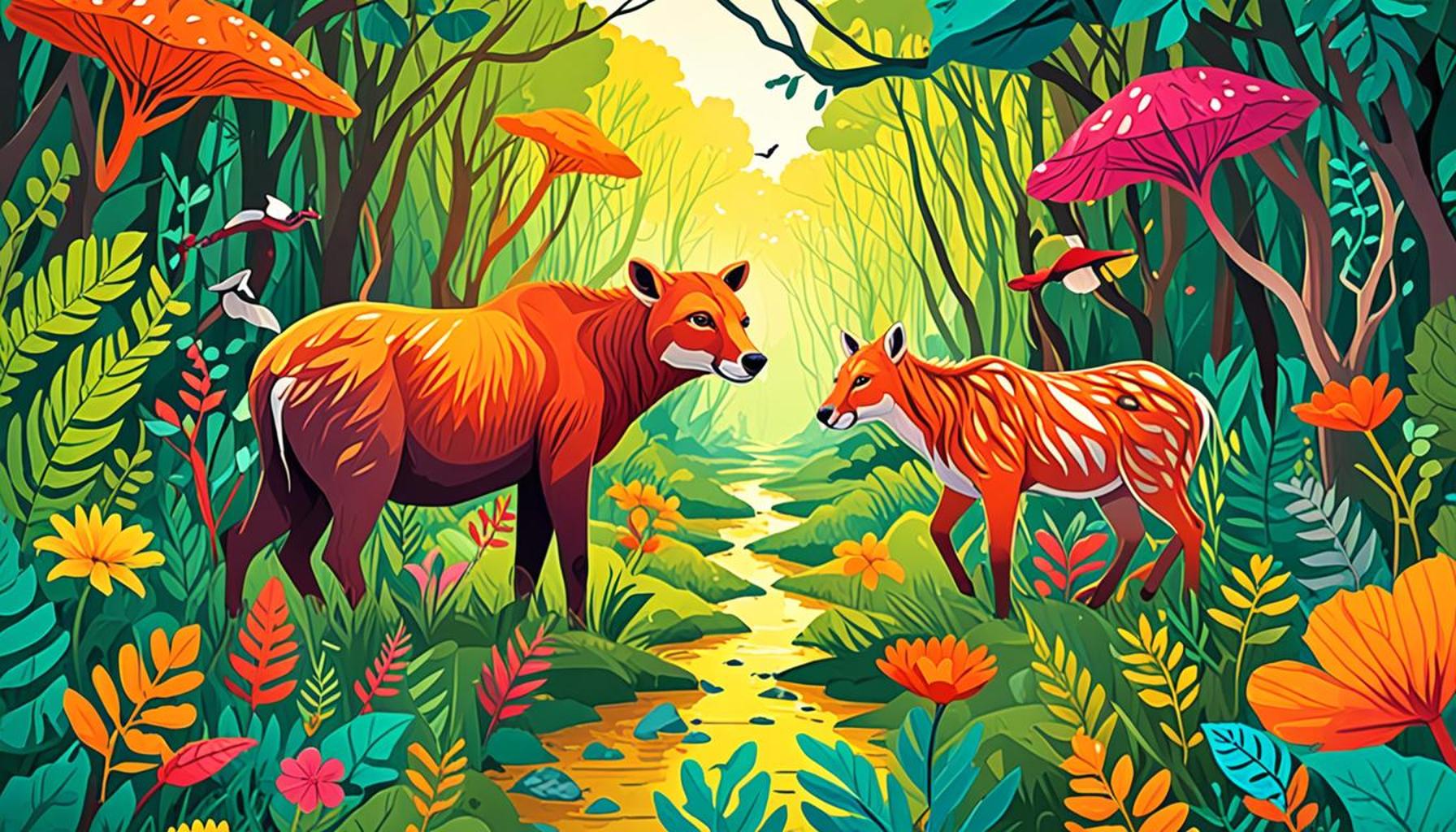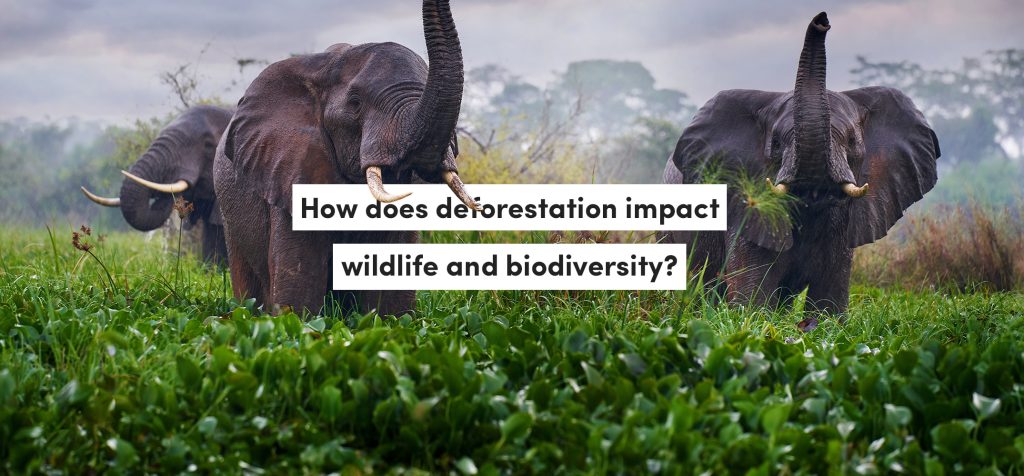The Importance of Wildlife Corridors for Ecosystem Conservation

Understanding Wildlife Corridors
As urbanization expands and climate change accelerates, wildlife corridors have become essential for the continuation and stability of various ecosystems. These natural pathways bridge fragmented habitats, allowing diverse animal species to migrate, forage, and reproduce with minimal obstacles. The significance of these corridors cannot be overstated, as they are increasingly viewed as critical lifelines for wildlife struggling to adapt to rapidly changing environments.
What Are Wildlife Corridors?
Wildlife corridors are specifically designated areas that facilitate safe passage for a multitude of species. Their design and function vary globally, but they share several key components that enhance the landscape:
- Landscape Connectivity: By connecting isolated habitats, wildlife corridors enable animal populations to interact, mingle, and exchange genetic material. This genetic flow is crucial for maintaining healthy populations and reducing the risk of extinction.
- Habitat Preservation: These corridors ensure that essential living spaces are safeguarded against development, agricultural expansion, and other forms of environmental degradation. For instance, the Bear Creek Wildlife Sanctuary in Colorado preserves critical habitats for various species by allowing safe passage across urban areas.
- Species Diversity: Corridors support a wide range of flora and fauna, promoting biodiversity. For example, the Florida Panther National Wildlife Refuge serves as a corridor for one of the rarest cats in the United States, thus nurturing various ecosystems in the process.
Why Are They Important?
The benefits of wildlife corridors extend beyond simple animal movement, fundamentally impacting ecosystem conservation. The importance of these corridors can be articulated through several vital benefits:
- Mitigating Extinction Risks: Isolated populations are more vulnerable to extinction due to inbreeding. Corridors connect these populations, thereby increasing genetic diversity and resilience against diseases and environmental changes.
- Climate Resilience: Corridors facilitate species adaptation to changing climates. As temperatures rise and habitats shift, these pathways allow species to migrate toward more favorable conditions, fostering ecological resilience. The Western Wildlife Corridor in Ohio enables species to adjust their ranges in response to climate variations.
- Promoting Ecosystem Services: Healthy ecosystems supported by wildlife corridors provide essential services, including clean air, water purification, and carbon sequestration. These services are vital for human well-being and economic prosperity.
Delving into the intricate relationships between wildlife corridors and ecosystem conservation unveils profound implications not only for nature but also for human societies. Understanding these connections enhances our appreciation of the planet’s interconnectedness, prompting deeper reflection on our responsibilities toward wildlife preservation. As we continue to explore this vital topic, it becomes increasingly clear that the health of our ecosystems is intrinsically linked to the survival of both wildlife and humanity. By prioritizing the establishment and maintenance of wildlife corridors, we can safeguard our planet’s biodiversity for generations to come.

CHECK OUT: Click here to explore more
Unlocking Ecosystem Benefits
The establishment of wildlife corridors is not merely a conservation strategy; it is a necessity for enhancing the health and sustainability of ecosystems. These corridors act as vital connectors in a fragmented landscape, serving a purpose that extends beyond facilitating animal movement. They provide a range of ecological benefits that are foundational to both wildlife and human populations alike.
Enhancing Biodiversity
One of the most crucial impacts of wildlife corridors is their role in enhancing biodiversity. By linking isolated habitats, these corridors serve as bridges for various species to disperse and establish new territories. This not only bolsters population numbers but also encourages genetic diversity, which is essential for species survival. For instance, the corridors facilitating the movement of the endangered Mexican Wolf help maintain genetic health in populations that would otherwise face the detrimental effects of inbreeding. The presence of diverse species also contributes to robust ecological networks, where different organisms interact and support one another’s growth and survival.
Ecological Functionality
Wildlife corridors enhance ecological functionality by promoting ecosystem services that benefit all life forms, including humans. These corridors play a critical role in:
- Pollination: Many plant species rely on animal pollinators, such as bees and butterflies, which utilize wildlife corridors for foraging and reproduction. By maintaining healthy populations of these pollinators, corridors directly impact food production and agricultural health.
- Seed dispersal: Animals that traverse wildlife corridors also contribute to seed dispersal, helping to maintain plant diversity and promote forest regeneration. This process is particularly vital in restoring landscapes that have been damaged by urban development.
- Water Management: Healthy ecosystems are adept at managing water flow and quality. Wildlife corridors can serve as natural buffers that absorb rainwater, reducing runoff and improving water filtration in surrounding areas.
The ripple effects of these services indicate just how interconnected wildlife corridors are with human well-being. With a significant portion of the U.S. population residing in urban areas, the establishment of wildlife corridors not only supports biodiversity but also enhances the quality of life for city dwellers by ensuring clean air and water quality.
Long-Term Viability of Ecosystems
Finally, wildlife corridors are integral to the long-term viability of ecosystems facing the increasing pressures of climate change. With shifting climates, species must relocate to adapt to new environmental conditions. Corridors provide the essential pathways needed for this migration, facilitating species’ survival in the face of ecological instability. For example, the Connecticut River Corridor serves as a critical link for numerous species migrating due to climate-related shifts in habitat suitability.
In light of these insights, it becomes evident that wildlife corridors are far more than a conservation concept; they represent a fundamental strategy for ecosystem conservation. As we delve deeper into the intricacies of their ecological roles, the importance of prioritizing wildlife corridors for sustainable ecosystems becomes increasingly apparent. By fostering a better understanding of these critical infrastructures, we can take significant steps toward preserving both wildlife and our own future on this planet.
| Advantage | Description |
|---|---|
| Habitat Connectivity | Wildlife corridors enhance habitat connectivity, allowing animals to move freely between fragmented areas, increasing genetic diversity. |
| Species Survival | These corridors are vital for species survival, particularly for those at risk, reducing the threat of extinction by providing safe passage to food and mating partners. |
Wildlife corridors serve as critical pathways that facilitate the movement of species across landscapes that have been fragmented by human activities. This connectivity is essential not only for the organisms’ immediate survival but also for maintaining the overall health of ecosystems. The preservation and establishment of wildlife corridors can significantly enhance biodiversity by connecting isolated habitats and promoting genetic exchange among populations. Additionally, as climatic changes alter animal behaviors and habitats, corridors are poised to play a pivotal role in adjusting migration patterns. Corridors facilitate the necessary movements of various species in search of optimal living conditions, thus enabling them to adapt to new environments effectively. The implementation of wildlife corridors can also offer numerous advantages for local communities, such as tourism opportunities and enhanced ecosystem services. Communities can benefit from the economic impact of ecotourism, which promotes wildlife observation and education while also advocating for conservation efforts. The establishment of these corridors presents a harmonious balance between ecological integrity and socio-economic growth, making it a compelling area of focus for conservationists and policy makers alike. Exploring further into the intricacies of wildlife corridors reveals the profound impact they can have regionally and globally in combatting biodiversity loss.
CHECK OUT: Click here to explore more
Promoting Landscape Resilience
The resilience of a landscape in the face of environmental changes is closely linked to the presence of wildlife corridors. These corridors enhance the adaptive capacity of ecosystems by providing safe passages for species to migrate and adapt to shifting climates. As extreme weather patterns become more prevalent due to climate change, the interconnectedness facilitated by corridors allows wildlife to respond effectively, escaping areas that have become inhospitable.
Climate Change Mitigation
Wildlife corridors also play a significant part in climate change mitigation. By preserving and enhancing fragmented habitats, these pathways support the maintenance of carbon sinks—areas capable of absorbing carbon dioxide from the atmosphere. Forests within protected corridors, like the critically acclaimed Yosemite to Yellowstone Corridor, not only provide habitat for diverse wildlife but also sequester carbon, which contributes to reducing greenhouse gas concentrations. Furthermore, by stabilizing local climates and weather patterns, these ecosystems can buffer surrounding human communities against stark climate effects.
Economic Value of Biodiversity
The economic benefits derived from healthy, biodiverse ecosystems significantly underscore the importance of wildlife corridors. A study by the National Oceanic and Atmospheric Administration (NOAA) estimated that ecosystem services linked to biodiversity—such as fisheries, tourism, and recreational activities—are worth trillions of dollars globally. In the United States, wildlife tourism, for instance, brings in approximately $72 billion annually, with areas featuring interconnected habitats attracting more visitors drawn to wildlife viewing and outdoor experiences.
On top of direct economic contributions, wildlife corridors help ensure the resilience of agricultural systems. Diverse ecosystems surrounding farms can enhance pollination and pest control, ultimately boosting crop yields. Furthermore, programs designed for restoring corridors, such as the California Wildlife Conservation Board’s corridor initiatives, often create new jobs in restoration and tourism, enhancing local economies while promoting conservation efforts.
Social and Cultural Significance
The value of wildlife corridors extends beyond the ecological and economic realms, branching into the social and cultural dimensions of communities. Many indigenous tribes across the U.S. recognize the significance of natural habitats and wildlife as part of their cultural heritage. Corridors not only protect these environments but also honor the traditional ecological knowledge that these communities possess. For example, the Blackfeet Nation in Montana is actively working to restore wildlife corridors that support native species, reflecting their connection to the land and the natural world.
As awareness grows around the need for wildlife corridors, initiatives such as the Wildlife Corridors Conservation Act have emerged at the legislative level, urging the federal government to allocate funding for connecting habitats across the U.S. These efforts demonstrate a conscious movement toward embracing the benefits of wildlife corridors—both for ecological integrity and human cultural values. Advocating for these vital pathways thus not only aligns with environmental goals but also enriches the interconnected fabric of life that sustains us all.
SEE ALSO: Click here to read another article
Conclusion: A Pathway to Conservation
Wildlife corridors stand as a critical component in the intricate tapestry of ecosystem conservation. As we have explored, these essential pathways not only facilitate species movement amidst fragmented habitats but also enhance the overall resilience of landscapes facing the dual threats of climate change and habitat loss. By promoting biodiversity, corridors enable wildlife to adapt, flourish, and secure vital resources necessary for survival in a rapidly changing world.
Furthermore, the economic value derived from healthy ecosystems cannot be overstated. From supporting local tourism to reinforcing agricultural productivity, wildlife corridors provide substantial returns on investment for communities and economies alike. They serve as a reminder that ecological health is intrinsically linked to human prosperity, reaching far beyond mere conservation goals.
The social and cultural significance of these corridors also reveals a deeper connection to the land. Indigenous communities across the U.S., like the Blackfeet Nation, have underscored the importance of restoring traditional pathways that foster ties to their heritage and promote ecological stewardship. This rich cultural narrative enhances the argument for wildlife corridors, emphasizing the indispensable role they play in uniting people and wildlife.
As legislative efforts, such as the Wildlife Corridors Conservation Act, gain traction, it becomes imperative for us to advocate for the establishment and protection of these vital routes. Embracing wildlife corridors is not just an ecological imperative; it is a transformative opportunity to create a sustainable future for both nature and humanity. Only by prioritizing these corridors can we hope to safeguard biodiversity for generations to come and ensure the health of our planet’s ecosystems. The time to act is now, as every step we take toward conservation enriches the living landscape we share.



